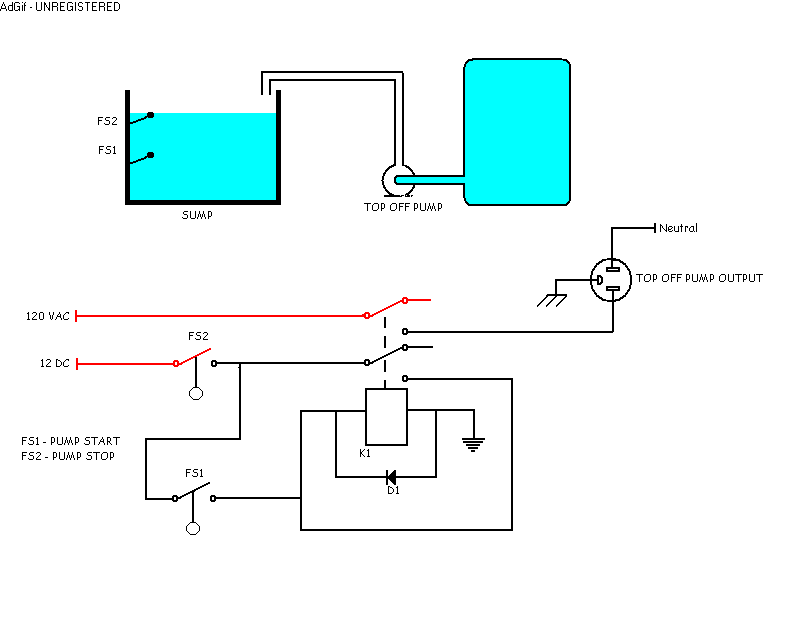The "latch" is controlled by two float switches, thus cutting the number of cycles in half, or more. Low level on, latches... high level unlatches the ciruit e.g. cuts the power to a relay coil. Again not dealing with load per se, although your float switch is under load when the contacts are closed. (current flows even at 0V; ~12V is what they are designed to handle, 120VAC is what burns up the contacts.)
This is rather than having a single float that can "work" the contacts with a small change in water level.
Personally, I find using an Appex to control a simple system such as an ATO, a bit much; and moreso because it does not incorporate any sort of failsafe, using a single control signal. Using a latching circuit would make your setup a little more complex, but still would not provide a failsafe. It is simply to save wear and tear on the float switch. E.G. more reliable.
Rather than carry 120VAC, the "120VAC" line would carry your signal.

I came across this post while searching for answers regarding my float valve for my RO system. I have a single manually operated Kent Marine float valve located near the top of my Brute trash can that shuts off the RO water once its full. I don't have anything else installed on RO system such as this BRS 1/4" auto shut off valve
https://www.bulkreefsupply.com/1-4-auto-shut-off-valve.html
All I have is the float valve hooked up to the output end of my RO system that goes into the trash can. I don't know if I needed anything additional.
I've been noticing for a long time when the trash can is full and the float valve supposedly shut off my RO system a burst of water will enter the RO system making a squealing noise, and make the pressure gauge shoot up to 10lbs and then it slowly goes down only to shoot another burst of water into the system. This happens over and over and over. My RO system when running normally to fill the trash can has 40+ lbs of pressure.
In an attempt to figure out the issue my RO manufacturer sent me a video about TDS Creep, but for some reason I can't upload the MP4 video as an attachment
Regardless it demonstrates that only having one float valve keeps triggering the RO system to fill up my trash can every time my ATO takes water from it. Thus sending just a little bit of water each time through the RO unit to refill what was used up....which I guess is bad.
I'm considering buying a double solenoid switch by Auto Top Off or SpectraPure to use on the trash can. The lower float switch will turn on the RO and the top switch will turn it off but the RO won't go back on again until the water level reaches the lower float switch. The RO will run for longer periods which is supposed to be good.
Still not sure why the burst of water is entering the RO system once its full like I described earlier unless its because I am missing something else thats supposed to be installed with the Kent manually operated float valve to properly shut off my RO system.
Last edited:
